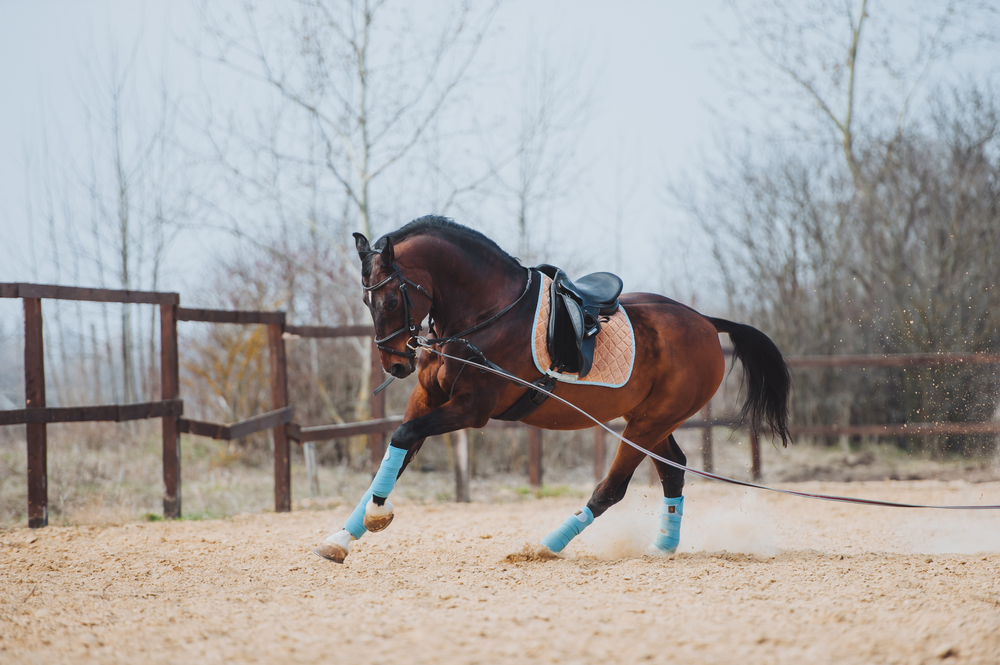Hmm, exercising a horse 🤔 well, buying a horse is the easy part (we heard this muttered many times), keeping your horse in top condition is where the work really begins and it’s why consistent exercise is essential to maintain the health and well-being of a horse. Here are 7 tips for exercising a horse:
1. Warm up and cool down
Just like humans, horses need to warm up before exercising to prevent injury and cool down afterward to aid in recovery. And believe it or not, walking is still an important part of your training. It’s just as hard for a horse to walk forward than trot or canter.
So take at least 10 minutes to switch your horse on ready for a lesson, actively engage your horse in a walk before exercise then allow for a nice relaxed walk after exercising.
2. Start slowly and gradually increase intensity
Start with light exercise, such as a walk, then walk to trot, and gradually increase the intensity of the exercise to walk, trot, canter. This will help your horse build up stamina and avoid injuries.
3. Mix it up
Vary the type of exercise your horse receives to prevent boredom (yes, horses get bored) and maintain interest. Mix up your riding routine by incorporating flatwork, jumping, trail riding, or lunging.
4. Consider the weather
Avoid exercising your horse during extreme weather conditions, such as high heat or cold temperatures. Adjust your riding schedule to the weather conditions and make sure your horse has access to good shade and plenty of water.
5. Provide rest days
Just like humans, horses need rest days to recover and rebuild their muscles. Provide your horse with rest days in between exercise sessions to prevent injury and burnout.
6. Monitor your horse’s behaviour and health
Monitor your horse’s behaviour and health during exercise to ensure they’re not over exerting. Watch for signs of fatigue, dehydration, or lameness, and adjust the exercise routine as needed. This requires you to really know your horse and pick up on any subtle changes. Horses don’t usually play up for no reason.
Rub your horse after untacking. Get a feel for how your horse’s tendons, joints and muscles feel when in good condition. If you know how your horse usually feels, it will help you pick up any signs of lameness.
7. Consult with a professional
Consult your vet, trainer, or experienced horse owner if you have questions or concerns about exercising your horse. They can provide guidance on the best exercise routine based on your horse’s needs and abilities. But know this, there are MANY opinions in the horse world, you have to sometimes go with your gut and have faith in your vet, farrier or trainer when it comes to managing your horse.
Giddy up 🐎



